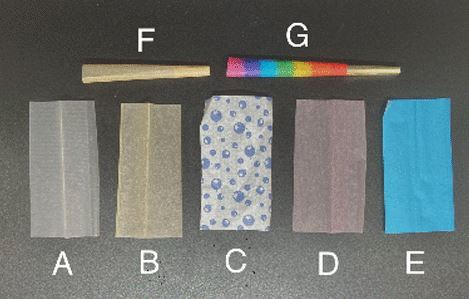A simple question, “What’s in that?” led to important findings affecting the health of cannabis users in the U.S.
A 2024 study conducted by researchers at Lake Superior State University analyzed the elemental composition of commercially available cannabis rolling papers. Specifically, the study targeted the patterns printed on the papers and the dyes used to print them. Researchers discovered that the printed papers contained significantly greater amounts of copper, chromium, and vanadium than blank papers without any print.

An image from the published study indicating the rolling papers which were tested.
There rose a concern before the study regarding the lack of regulation of cannabis accessories despite the strict regulation of cannabis itself. Cannabis ruled safe by regulation could become a danger to consumers when wrapped with unregulated paper containing a great deal of toxic heavy metals in the dye.

Map of the element distribution in the blue rolling paper (E) published in the study. The images include a base image and the distribution of 10 elements: (top left to top right) base image, carbon, oxygen, aluminum, (middle left to middle right) silicon, phosphorus, sulfur, chlorine, (bottom left to bottom right) calcium, titanium, and copper.
Not long after LSSU researchers published their findings, one rolling paper company in the U.S. took a proactive stance and discontinued all printed rolling paper options in their inventory. Custom Cones USA was prompted to discontinued printed rolling paper after the company’s CEO discovered the study and the risk for exposure to deadly chemicals.
